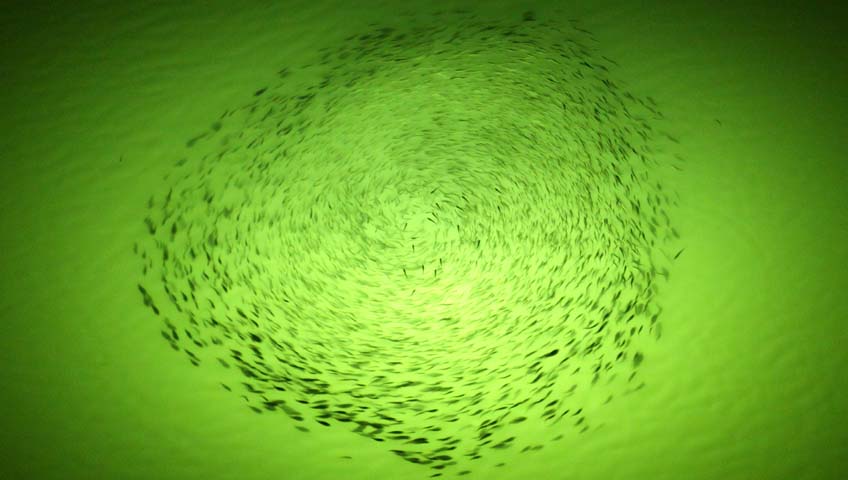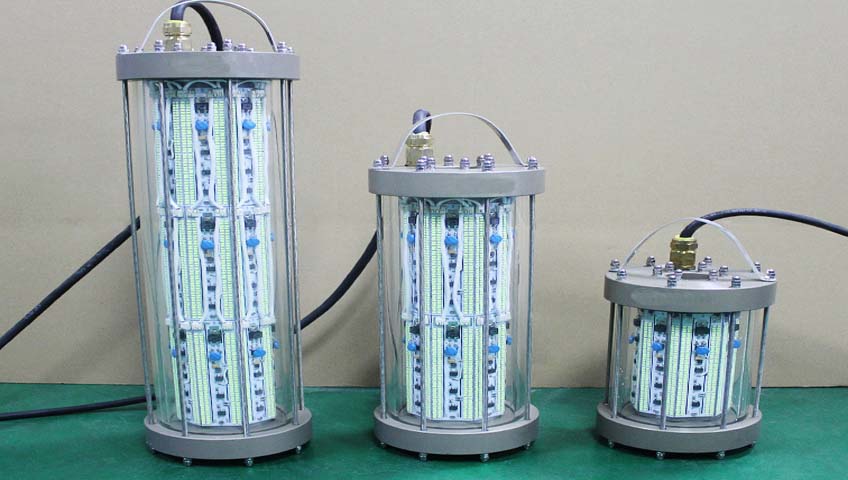Underwater Fishing Lights or A fishing light attractor is a fishing aid which uses lights attached to structure above water or suspended underwater to attract both fish and members of their food chain to specific areas in order to harvest them. Just as fisherman seek conditions where the chance of catching fish is optimized, fish seek areas where the chance of catching their food is optimal. Most game fish seek waters that are rich in food such as smaller fish, insects or shrimp. And, it follows, that these smaller fish, insects and shrimp congregate where their food is most concentrated.
Scientific research shows that all members of this food chain have eyes sensitive to the colors blue and green. This probably evolved because the water these animals live in is blue or greenish in color. Water, containing little particulate matter, scatters light in the blue region of the spectrum. If water is rich in nutrients and contains photosynthetic microorganisms and plants, the chlorophyll in their bodies preferentially absorb red light. The remaining, unabsorbed light is transmitted and scattered, thus giving the water a greenish appearance. If water contains a lot of organic material from decaying plant life or suspended sediment, it may take on a yellow-brown color.
It has been known for a long time that a light attracts fish, shrimp and insects at night. But what is the best color for a light attractor? Based on the biology of visual receptors, the light should be blue or green — the space colors of fish and members of their food chain. However, while blue or green light is desirable it is not essential. Even if the eyes of fish or members of its food chain have color receptors most sensitive to the blue or green, these same receptors have a broad but decreased sensitivity to other colors. So, if a fishing light source is intense enough, other light colors will also attract. For example, a sodium vapor light with its characteristic yellow color will attract fish — if intense enough. A fishing light attractor can also be white light because a portion of its total energy is in the blue to green region.
The perfect fishing light would have the following properties: 1) high intensity, 2) emit its light in a color similar to the fishes space (blue or green), 3) be powered by a portable electrical supply and 4) be submersible. The last attribute is desirable because significant amounts of light energy from land- or boat-mounted lights are lost by reflection off the surface of the water.


